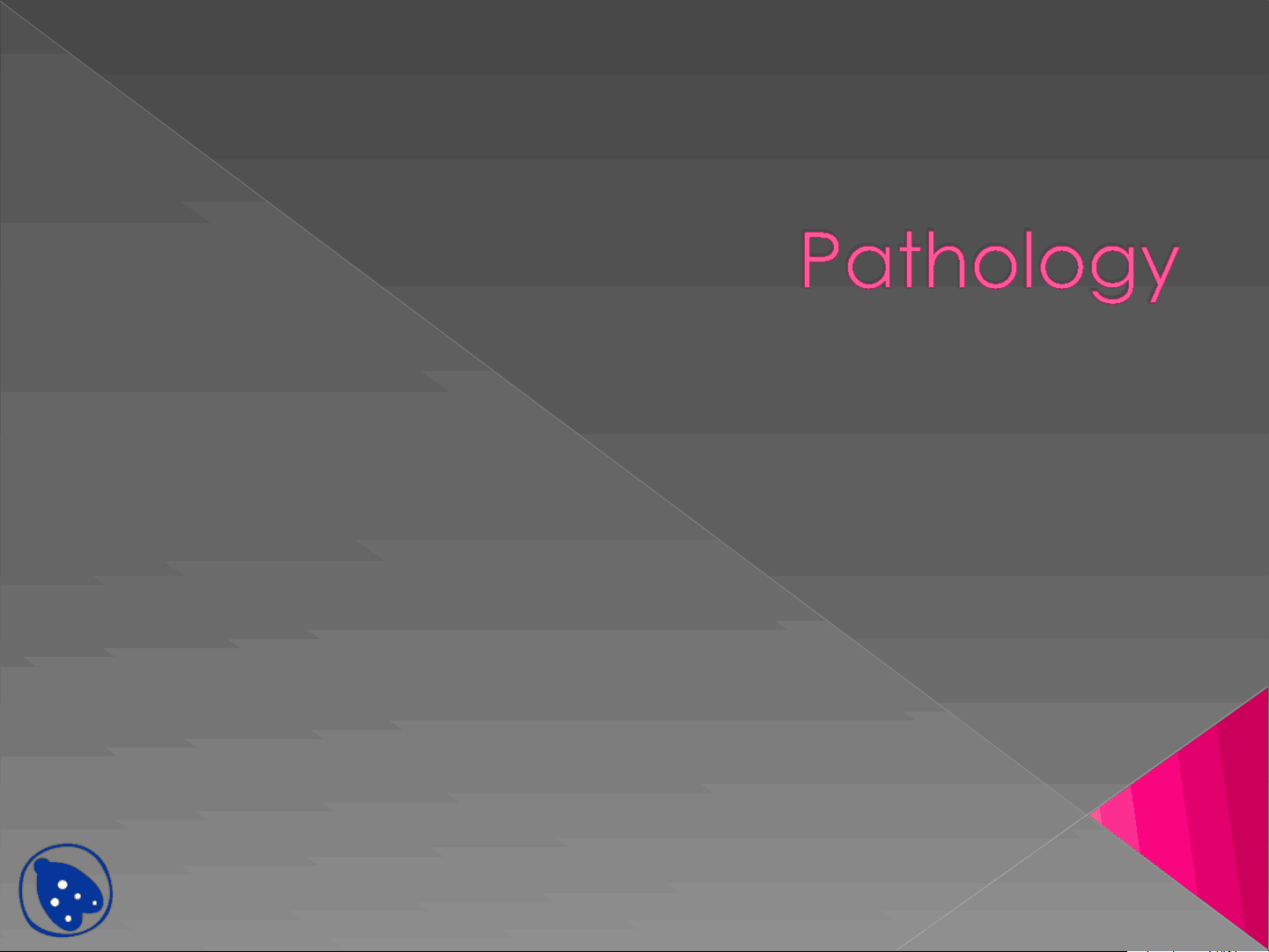
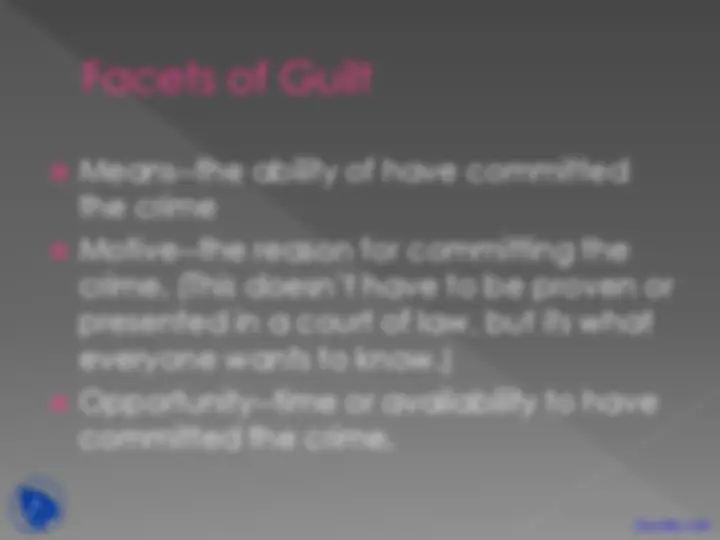
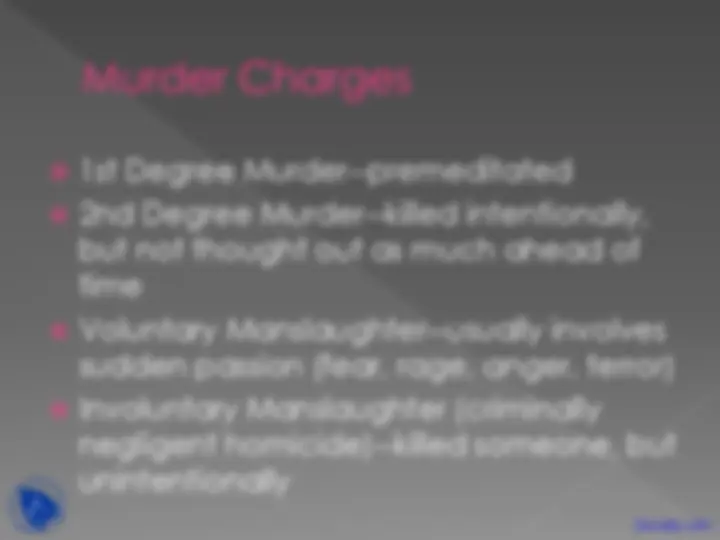
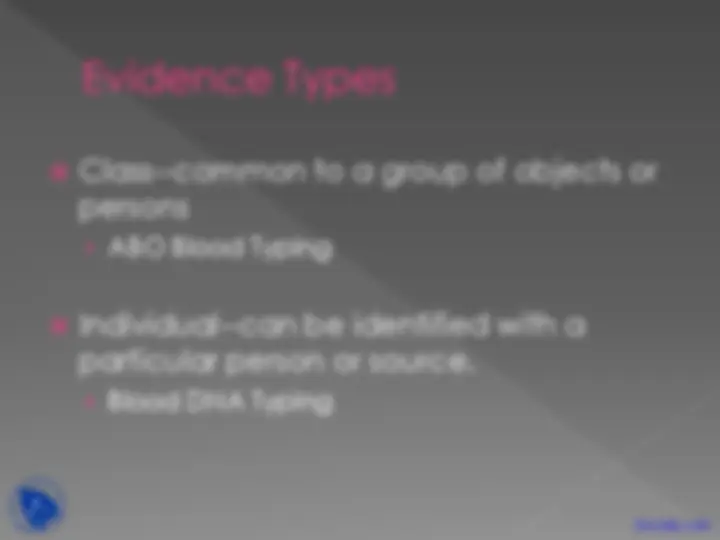
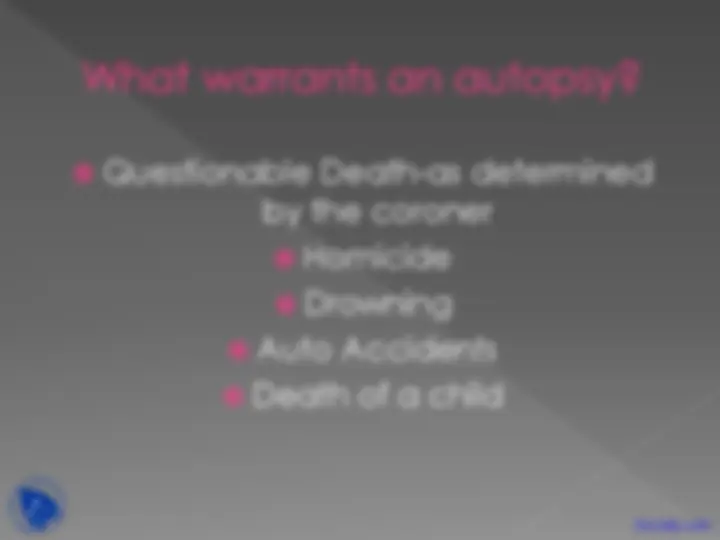
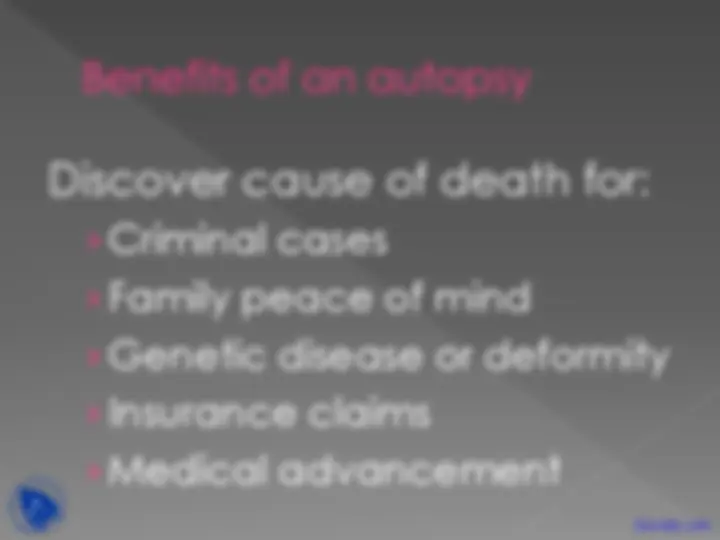
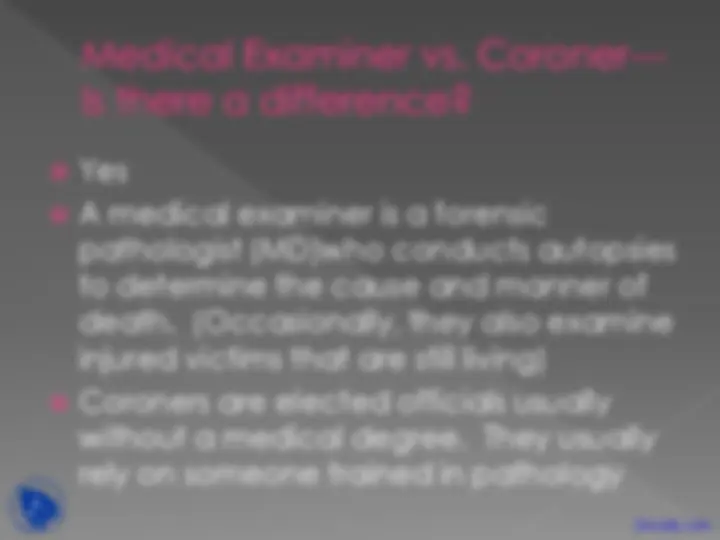
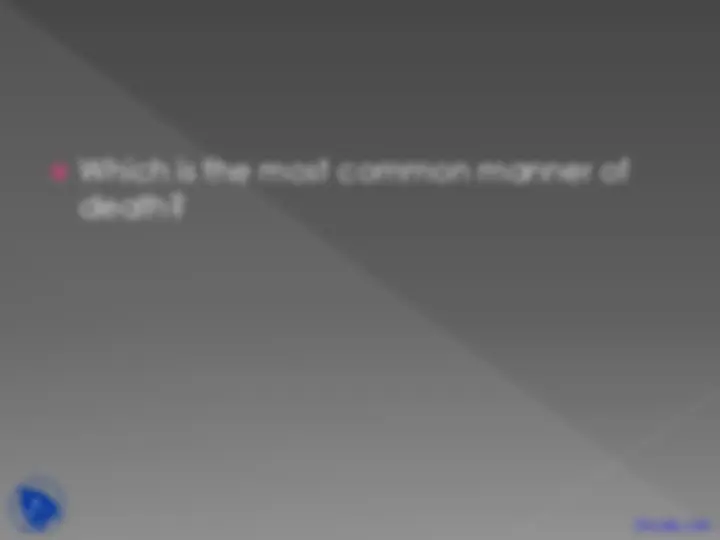
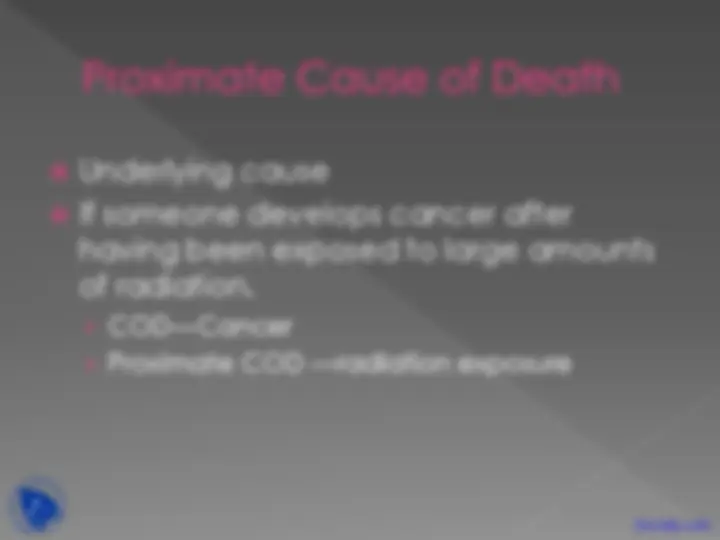
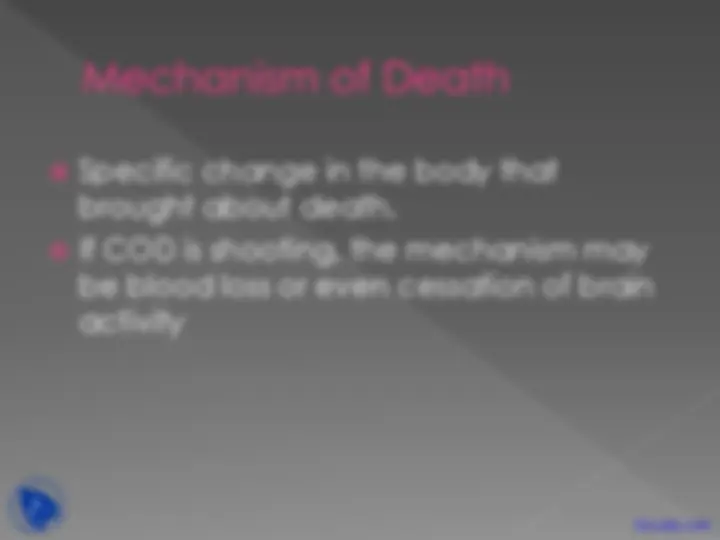
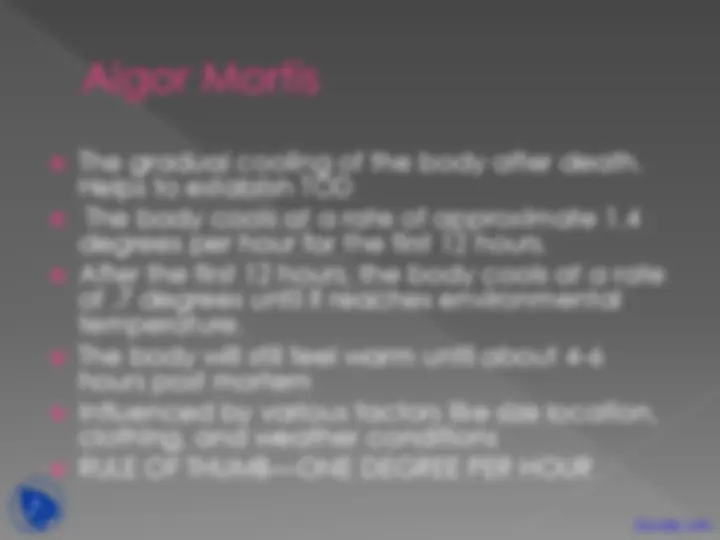
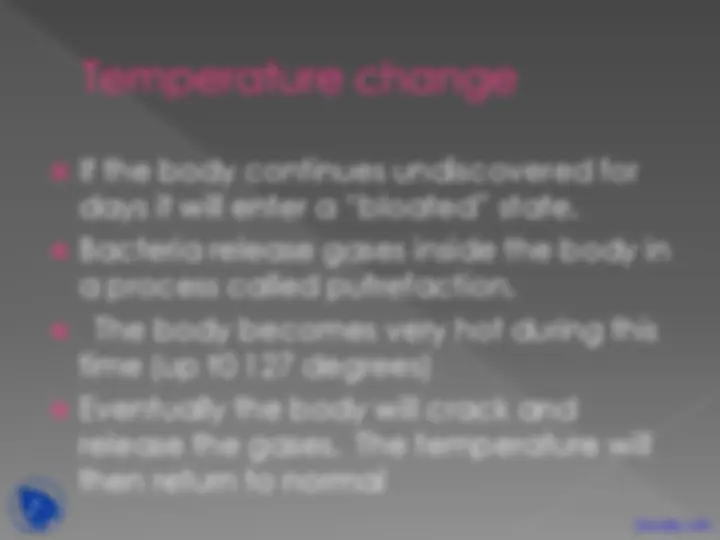
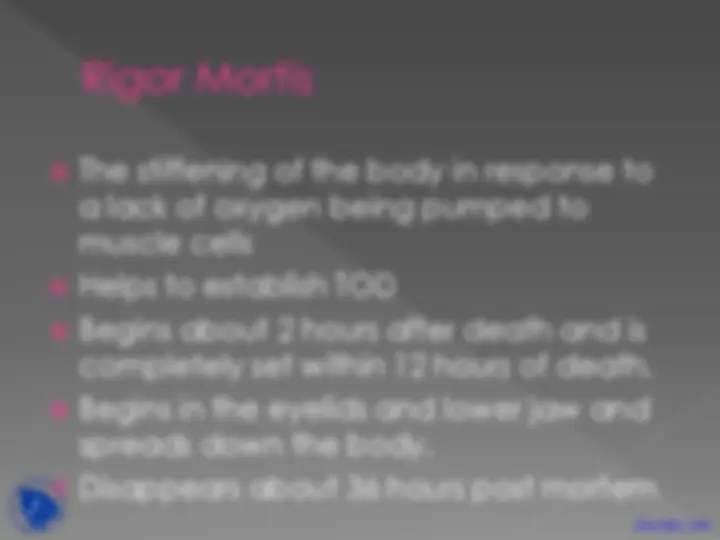

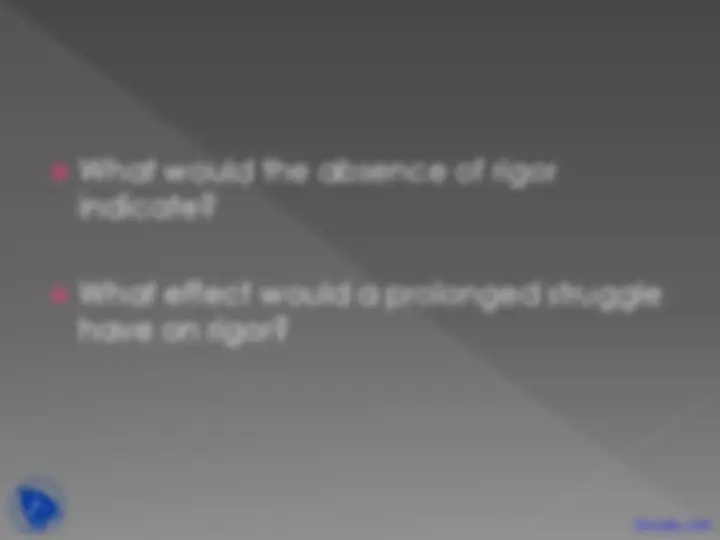
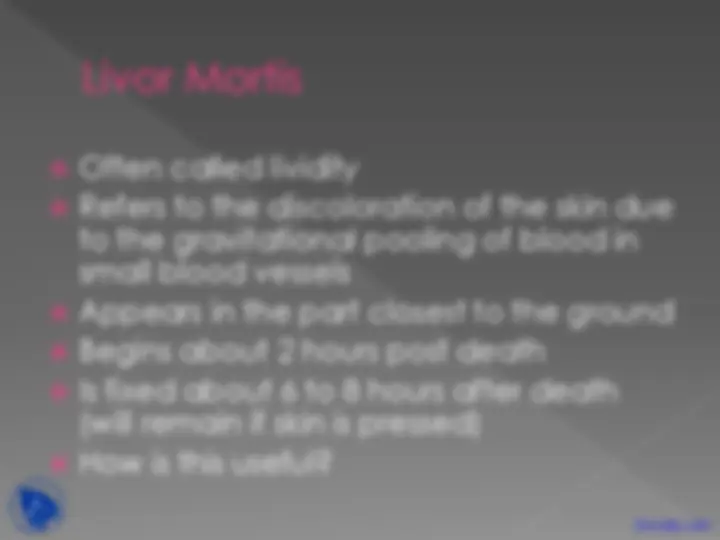
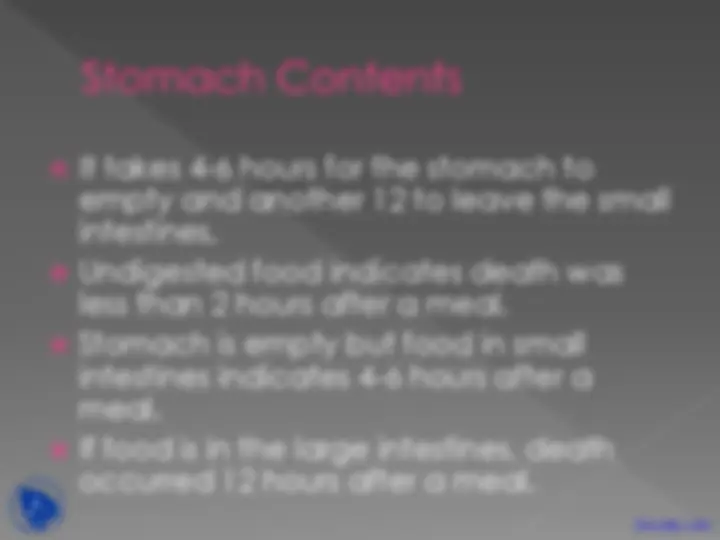
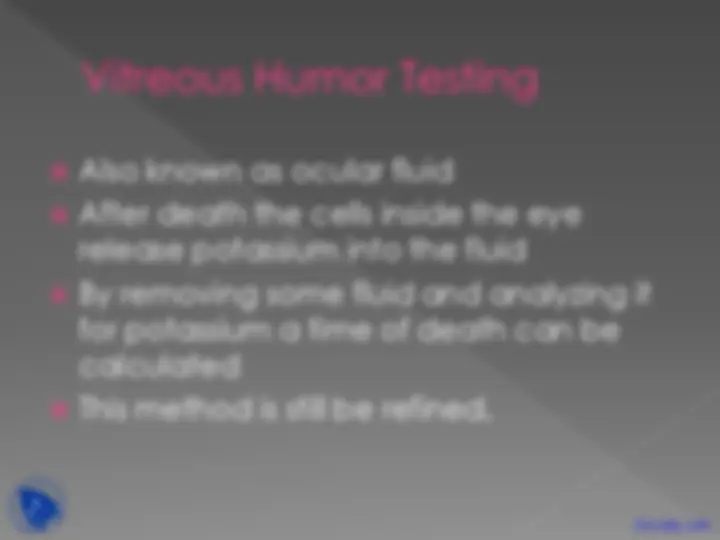


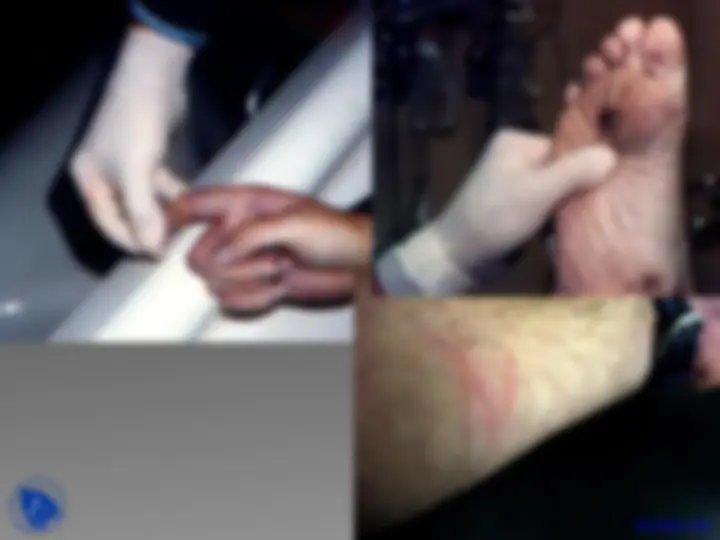
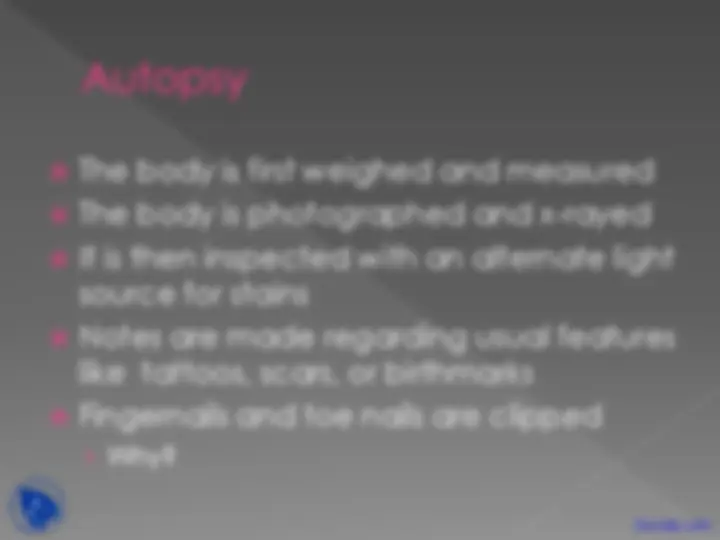
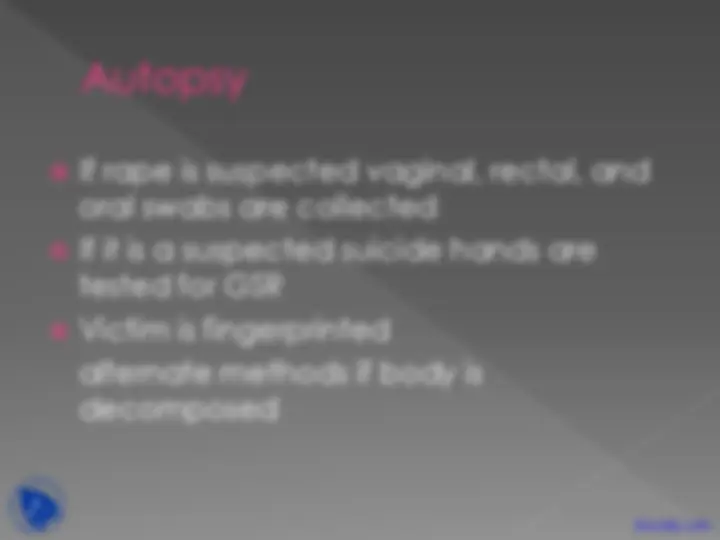
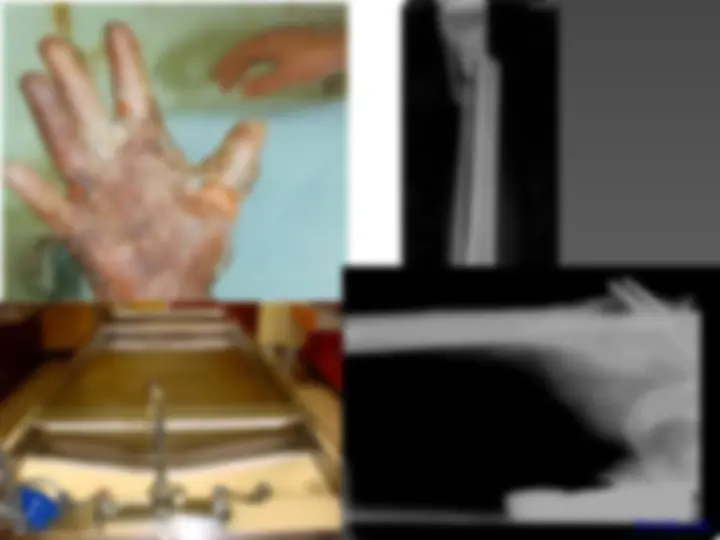
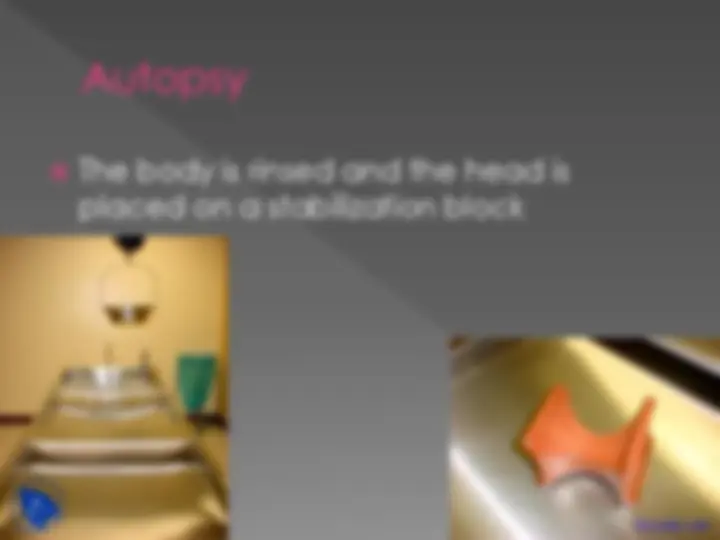
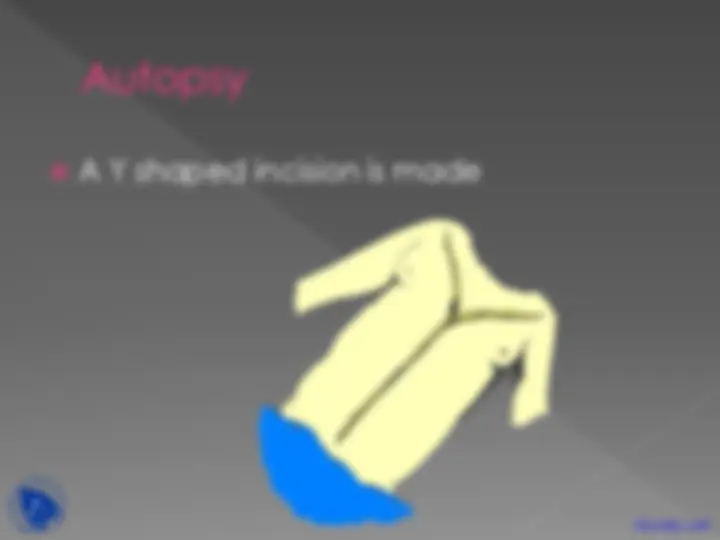
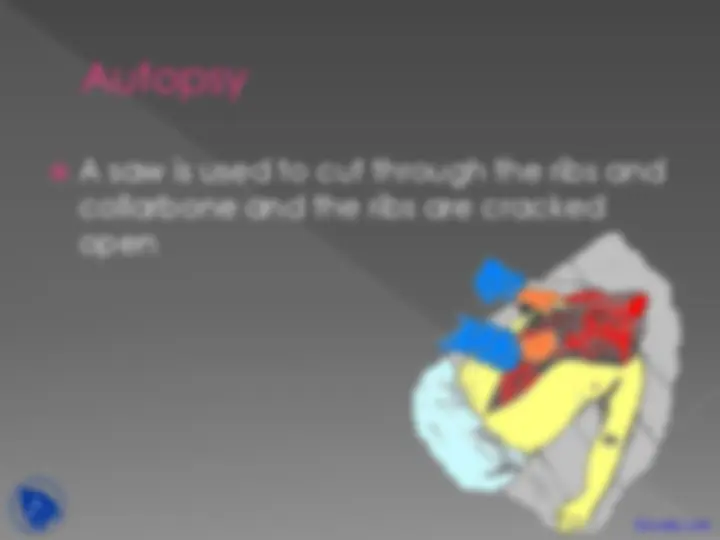
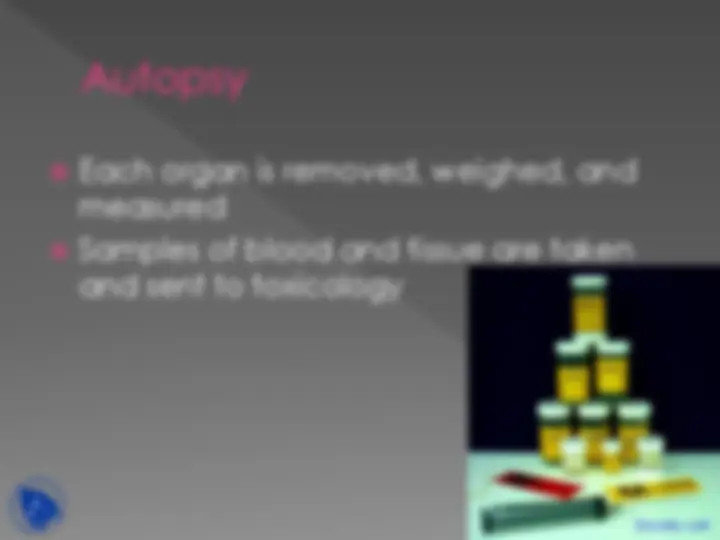
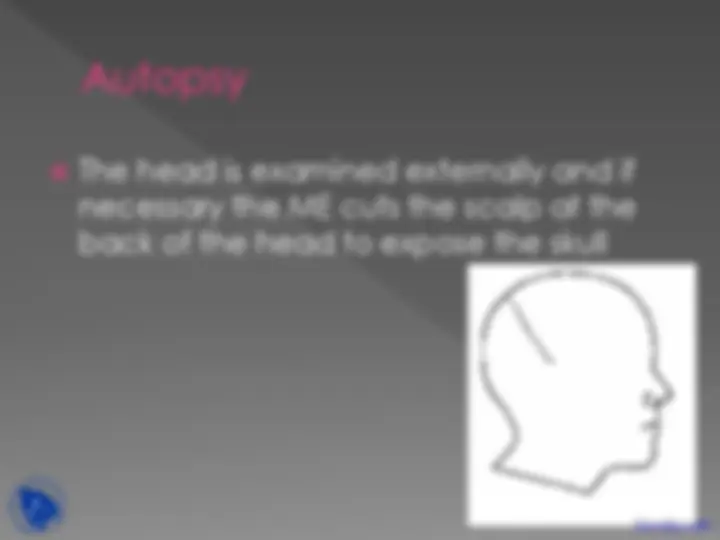
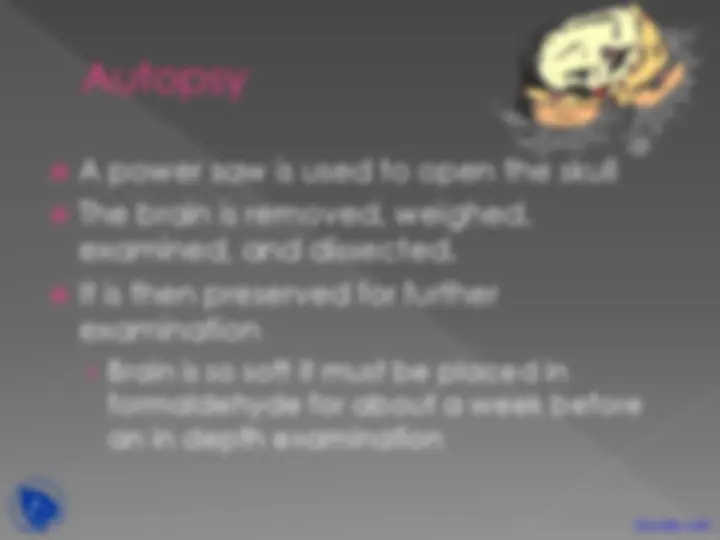
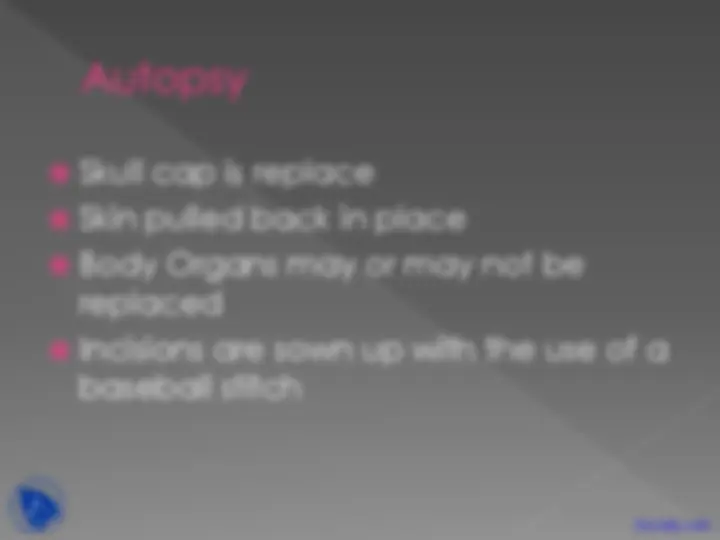
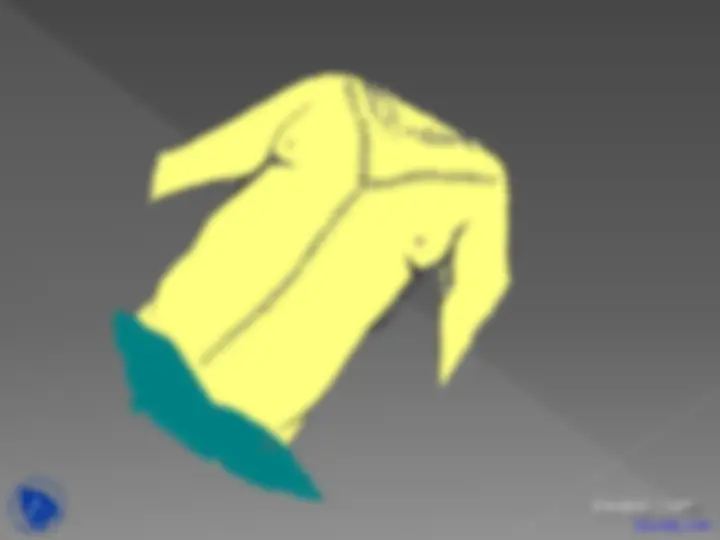


Study with the several resources on Docsity

Earn points by helping other students or get them with a premium plan


Prepare for your exams
Study with the several resources on Docsity

Earn points to download
Earn points by helping other students or get them with a premium plan
Community
Ask the community for help and clear up your study doubts
Discover the best universities in your country according to Docsity users
Free resources
Download our free guides on studying techniques, anxiety management strategies, and thesis advice from Docsity tutors
Forensic science (often shortened to forensics) is the application of a broad spectrum of sciences and technologies to investigate and establish facts of interest in relation to criminal or civil law. This lecture includes: Pathology, Crime Occurred, Body of the Crime, Money, Revenge, Sex, Source of Evidence, Body, Primary, Secondary Crime Scene
Typology: Slides
1 / 39

This page cannot be seen from the preview
Don't miss anything!
































CORPUS DELICTI“ Body of the Crime”
You must prove: › that a crime occurred › that the person charged with the crime was responsible for the crime
Top Reasons for Committing a Crime › Money › Revenge › Sex › Emotion--love, hate, anger
Source of Evidence › Body › Primary and/or Secondary Crime Scene › Suspect(s)
1st Degree Murder--premeditated
2nd Degree Murder--killed intentionally, but not thought out as much ahead of time
Voluntary Manslaughter--usually involves sudden passion (fear, rage, anger, terror)
Involuntary Manslaughter (criminally negligent homicide)--killed someone, but unintentionally
Class--common to a group of objects or persons › ABO Blood Typing
Individual--can be identified with a particular person or source. › Blood DNA Typing
No easy definition
Cessation of heartbeat vs no brain activity
Yes
A medical examiner is a forensic pathologist (MD)who conducts autopsies to determine the cause and manner of death. (Occasionally, they also examine injured victims that are still living)
Coroners are elected officials usually without a medical degree. They usually rely on someone trained in pathology
Medical examiners determine both the cause and the manner of death.
Cause---refers to the actual medical or forensic reason that the individual died
Manner---how the death was accomplished
If a person was strangled to death
› Cause—asphyxiation › Manner---homicide
Which is the most common manner of death?
Underlying cause
If someone develops cancer after having been exposed to large amounts of radiation. › COD---Cancer › Proximate COD ---radiation exposure
After death a body goes through a series of changes
Algor Mortis
Rigor Mortis
Livor Mortis
Stomach contents
Insect activity
Vitreous Humor testing
If the body continues undiscovered for days it will enter a “bloated” state.
Bacteria release gases inside the body in a process called putrefaction.
The body becomes very hot during this time (up t0 127 degrees)
Eventually the body will crack and release the gases. The temperature will then return to normal
The stiffening of the body in response to a lack of oxygen being pumped to muscle cells
Helps to establish TOD
Begins about 2 hours after death and is completely set within 12 hours of death.
Begins in the eyelids and lower jaw and spreads down the body.
Disappears about 36 hours post mortem